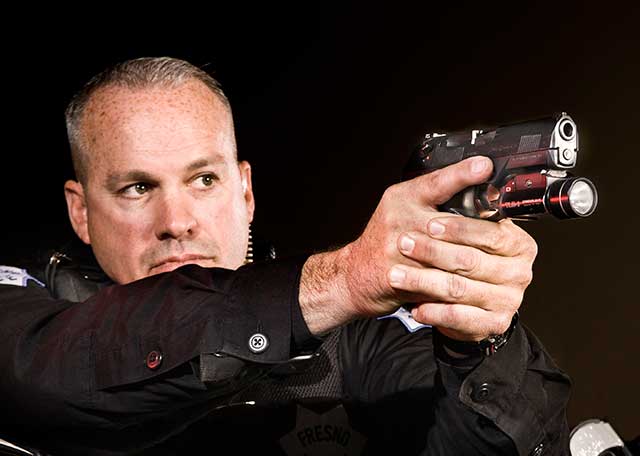In a recent Denver Post article, the reporters addressed the potential problems of white lights mounted on handguns based on their research of accidental shootings by police officers. Do weapon mounted lights increase the likelihood of an accidental shooting, or is this a case of incomplete journalism?
The Evidence
The article is written in a way to persuade the reader, rather than a clear presentation of facts. Therefore, one has to ignore the personalized aspects of the writing to find the relevant details. While the human aspects of the events are moving, they do not help one make a reasonable conclusion based on the facts.
Here are the facts distilled from the article:
- The Denver Post identified five incidents in which people were unintentionally shot by police officers in the United States during a nine year period. According to the Denver Post, these incidents were related to the use of weapon mounted flashlights.
- In two of the incidents the victims were other officers. Three of the incidents involved victims who were suspects or bystanders.
- An unknown number of incidents not involving injury have occurred. Unintended discharges are not tracked in a national database, and the Denver Post located a small number of incidents they claimed were flashlight related but did not result in injury.
- Training with the lights varies from department to department from no specialized training to intensive low light classes.
The relationship between the flashlight presence and/or use and the unintentional shooting is tenuous in several of the cases identified by the Denver Post.
- Feb 2005: Officers are searching a dark house for a suspected felon. While walking down basement stairs, an officer attempts to activate a weapon mounted light and “hit the trigger instead,” shooting his partner in the leg. The injured officer then sues the flashlight maker.
- May 2009: A detective unintentionally shoots a passenger in a car after a short pursuit of a fugitive believed to be in possession of a firearm. A court document states the detective attempted to activate a weapon mounted light and the gun discharged. The court guessed the gun discharge might have occurred “…as a result of his finger slipping and hitting the trigger.”
- October 2010: An officer “tried to shine his flashlight on a suspected drug dealer,” but had an unintentional discharge which struck and killed the suspect. The officer was using a weapon mounted light with a remote pressure pad mounted on the front strap of the pistol.
- December 2010: An officer attempting to gain access to an attic space climbed on top of a table, fell and unintentionally shot another officer’s foot. The Denver Post only notes that the officer had a light mounted on the light, not that the officer was doing anything with it.
- January 2011: An officer unintentionally shot an uninvolved party during an arrest. The Denver Post stated the officer “…tried to adjust the flashlight on his Glock pistol…” when “he accidentally hit the trigger…” This incident the Denver Post noted was with a pressure switch mounted “below the trigger.”
Frankly, the article failed to convince me that there is any relationship – much less a causal one – between weapon mounted flashlights using a pressure pad mounted on the front strap of the gun and unintentional discharges. That doesn’t mean that there is not one, but the writers did not do an adequate job of showing the relationship. In fact, in three of the incidents, the writers did not even state if pressure pads were involved.
The Denver Post failed to address any of the non-flashlight issues in the five incidents. For example, in four of the incidents, the Denver Post presents no information on the general firearms training that any of these officers had.
In incident #4, the officer most likely clenched his fists in a sympathetic nervous system response when falling, causing the trigger finger to curl in and press the trigger. In incident #5, fiddling with a loaded gun – regardless of why you are doing it – greatly increases the odds of unintentional discharges.
Do Weapon Mounted Lights Increase the Odds of an Unintentional Discharge?
Unfortunately, the Denver Post article asks, in a roundabout way, a good question, but fails to deliver very many useful facts.
Here’s my takeaway:
- Ignore the basic gun safety rules and people can get unintentionally hurt.
- Anyone who carries a gun should be trained with it and all of the accessories that might be attached to it. This goes for armed citizens and police officers alike.
- Police departments do not provide adequate training for their officers, and until the public gets involved, that is not likely to change.
- A study of weapon lights and how they affect (if at all) unintentional shootings may be a good idea.
What are your thoughts?
Thanks to Al for the tip.
 Your Privacy Choices
Your Privacy Choices
